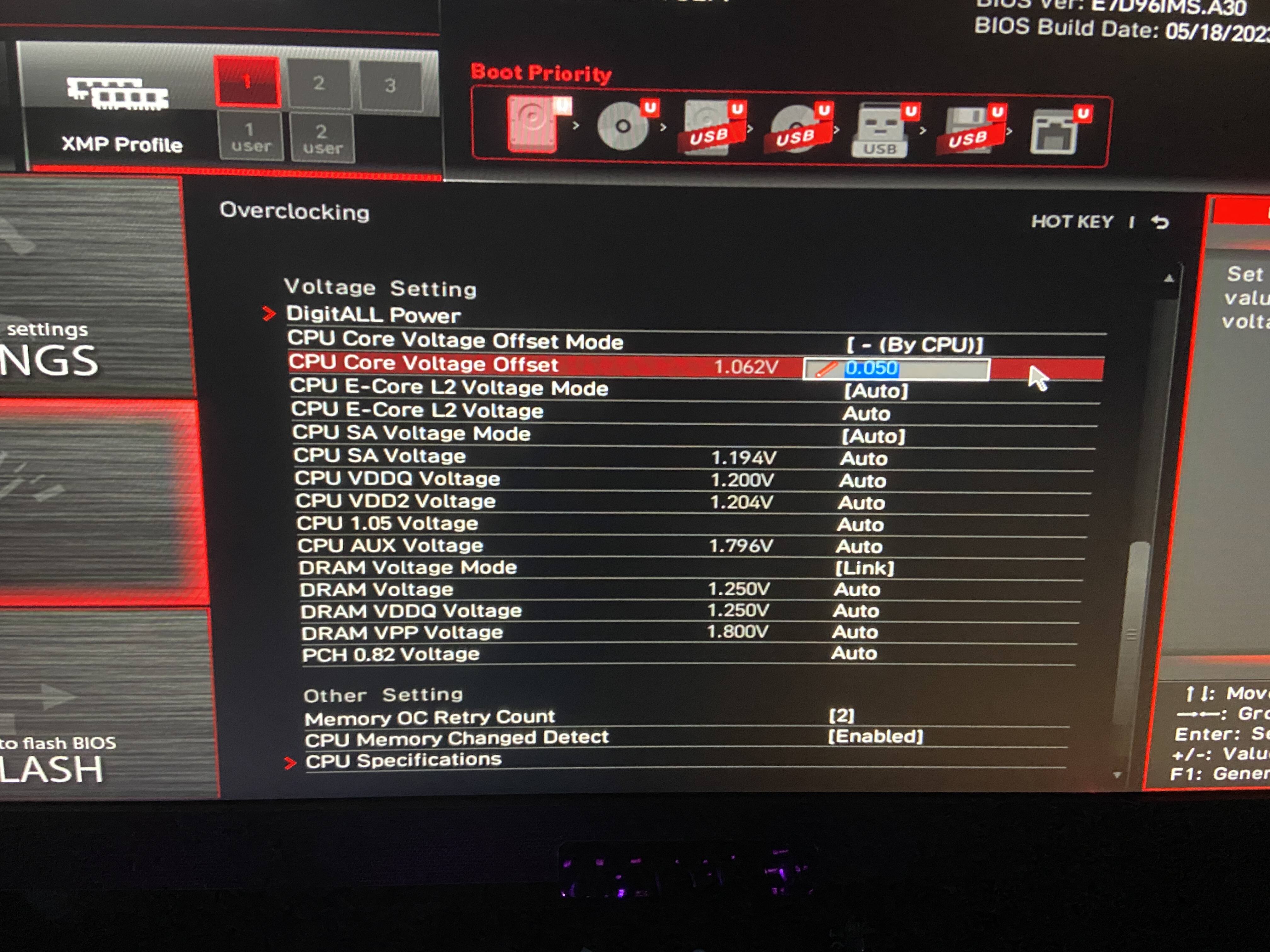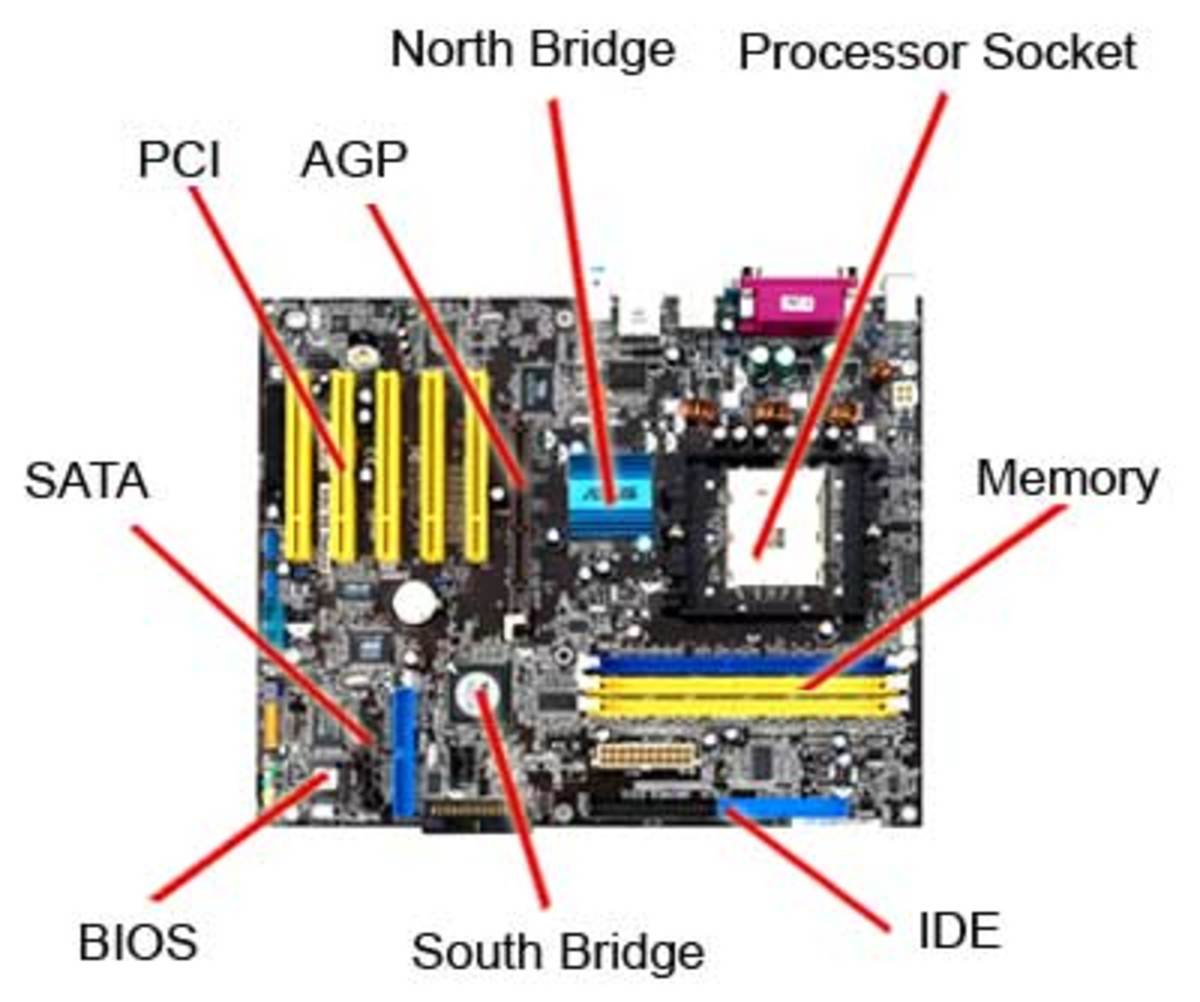Divine Tips About Is BIOS A CPU Or Mobo

Decoding the BIOS
1. Unpacking the Mystery
Ever wondered what that initial screen you see when you power on your computer is all about? That's the BIOS (Basic Input/Output System) in action! Think of it as the computer's first teacher, responsible for waking up all the hardware and getting everything ready for the operating system to take over. It performs crucial tasks like running a power-on self-test (POST) to make sure all the components are working correctly, and then it loads the operating system from your hard drive or SSD.
So, where does this teacher reside? Is it snuggled up inside the CPU, or does it have its own little room on the motherboard? This is a question that often pops up, and the answer isn't quite as straightforward as you might think. Let's dive in and figure it out!
To truly understand where the BIOS sits, it's important to understand what it actually is. The BIOS isn't a physical component like the CPU or RAM. It's actually firmware, a type of software that's permanently stored on a chip. This chip holds the instructions that the computer needs to boot up. It's a bit like a tiny read-only memory (ROM) bank with pre-programmed knowledge.
Knowing this, we're one step closer to uncovering its true location! We know it's firmware stored on a chip, so the question becomes, "Where is that chip located?".
2. Motherboard, the BIOS's Home Base
Alright, the big reveal! The BIOS chip is almost always found on the motherboard. Yep, it's a resident of the motherboard neighborhood. This small chip, typically a ROM, EEPROM, or flash memory chip, is soldered directly onto the motherboard. It's like a little house built right into the foundation of your computer.
The motherboard serves as the central hub for all the computer's components, providing the necessary connections and communication pathways. It makes perfect sense for the BIOS to be located here, as it needs to interact with various components like the CPU, RAM, storage devices, and peripherals during the boot process.
While the BIOS resides on the motherboard, it works very closely with the CPU. The CPU is the brain of the computer, executing instructions and performing calculations. During the boot process, the CPU is the first thing the BIOS wakes up. The BIOS then provides the CPU with the necessary instructions to initialize the system and start the boot sequence. Its a team effort, really!
Think of the motherboard as the town, and the BIOS chip as the town hall. The CPU is like the mayor who needs to visit town hall (the BIOS) to get things started each day. The BIOS provides the mayor (CPU) with all the necessary information and instructions to run the town (the computer).
3. CPU's Role in the BIOS Dance
Now, while the BIOS chip physically lives on the motherboard, the CPU plays a vital role in its operation. When you power on your computer, the CPU is the first to wake up and look for instructions. The BIOS chip contains those initial instructions, which tell the CPU how to initialize the system, test the hardware, and load the operating system.
The CPU executes the instructions stored in the BIOS firmware, effectively bringing the computer to life. It's a collaborative effort where the BIOS provides the roadmap, and the CPU does the driving. Without the CPU, the BIOS would simply be a dormant chip, unable to perform its functions.
The relationship between the CPU and BIOS is fundamental to the functionality of the computer. The BIOS makes initial checks and informs the CPU about the configuration of various pieces of hardware. Think of it as the BIOS handing the CPU a detailed report on how the hardware is set up so the CPU knows what to do.
So, even though the BIOS isn't inside the CPU, it's critically dependent on the CPU to carry out its crucial tasks during startup. It's more like a partnership, where one party provides the instructions, and the other executes them!
4. More Than Just Booting
While its primary function is to kickstart your computer, the BIOS also plays a role beyond just booting. It provides a basic interface for configuring hardware settings, such as boot order, fan speeds, and voltage settings. You can access this interface, often called the BIOS setup utility, by pressing a specific key (usually Delete, F2, or F12) during the startup process.
Within the BIOS setup utility, you can fine-tune various settings to optimize your system's performance and stability. For example, you can change the boot order to prioritize booting from a USB drive or DVD, enable or disable certain hardware features, or adjust fan speeds to keep your components cool. It's a treasure trove of customizable options, if you know where to look (and what you're doing!).
Modern computers have moved towards UEFI (Unified Extensible Firmware Interface), which is essentially a more advanced and feature-rich replacement for the traditional BIOS. UEFI offers a graphical interface, support for larger hard drives, and improved security features. However, the fundamental principle remains the same: it's firmware stored on a chip on the motherboard that initializes the system and loads the operating system.
So, the BIOS (or UEFI) isn't just about getting your computer to turn on. It's about setting the stage for everything else that happens afterward. It's the unsung hero of your computing experience!
5. BIOS Updates
Just like any other software, the BIOS can be updated to fix bugs, improve compatibility, or add new features. BIOS updates are typically provided by the motherboard manufacturer and can be downloaded from their website. These updates often involve flashing (writing) a new version of the firmware to the BIOS chip.
Updating the BIOS can be a bit risky, as an interruption during the process can potentially brick your motherboard (render it unusable). However, it's often necessary to keep your system running smoothly and compatible with the latest hardware and software. It's generally recommended to update the BIOS only if you're experiencing specific issues or if the update addresses a known security vulnerability.
Before updating your BIOS, be sure to carefully read the instructions provided by the motherboard manufacturer and back up your important data. It's also a good idea to use a UPS (uninterruptible power supply) to protect against power outages during the update process. Safety first! Although, modern motherboards often have features to help recover from a failed flash, it's better to be safe than sorry.
Ultimately, keeping your BIOS up-to-date is an important part of maintaining a healthy and stable computer system. It's like giving your motherboard a brain boost, ensuring that it's equipped to handle the latest challenges and opportunities.

Will This Cpu Work With Mobo. I Saw A Review Saying Need To
FAQ
6. Frequently Asked Questions About the BIOS
Let's tackle some frequently asked questions to solidify your understanding of the BIOS:
7. Q
A: Nope! The BIOS is essential for initializing the hardware and loading the operating system. Without it, your computer wouldn't know where to start and wouldn't be able to boot.8. Q
A: Definitely not. The BIOS is firmware that initializes the hardware, while the operating system is software that manages the computer's resources and provides a user interface. The BIOS loads the operating system, but they are two distinct entities.9. Q
A: You can usually find the BIOS version during the startup process, often displayed on the initial screen. You can also find it within the BIOS setup utility or by using system information tools in your operating system.10. Q
A: UEFI is the modern successor to BIOS. It offers a graphical interface, supports larger hard drives, faster boot times, and enhanced security features compared to the older BIOS.11. Q
A: While it's rare, it is possible for malware to target the BIOS. These types of attacks are particularly dangerous because they can be difficult to detect and remove. Keeping your BIOS updated and practicing safe computing habits can help protect against these threats.

Superior Stability By GIGABYTE BETA BIOS With Intel Baseline On Z790


![How To Reset An MSI BIOS? [All Possible Ways] How To Reset An MSI BIOS? [All Possible Ways]](https://www.cgdirector.com/wp-content/uploads/media/2022/09/BIOS-Reset-on-MSI-nForce2-Motherboards-Short-Jumpers.jpg)